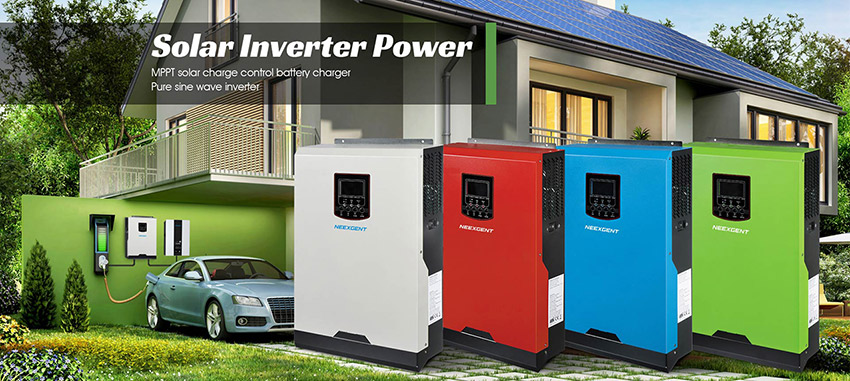Contents:
1. Converting Solar Power into Usable Electricity
2. Maximizing Energy Efficiency
3. Monitoring and Maintenance
4. Enhancing Grid Stability
5. Enabling Energy Storage
6. Reducing Carbon Footprint
7. Empowering Sustainable Living
Conclusion
FAQs:
Solar energy has rapidly emerged as a leading alternative to traditional power sources, with solar inverters playing a pivotal role in this revolution. As more households and businesses transition to solar energy, solar inverters have proven to be essential components that transform raw solar power into usable electricity. Their impact is profound, enhancing both the efficiency and reliability of solar power systems. Here’s how solar inverters make a significant difference in our daily lives.

Solar panels generate Direct Current (DC) electricity, which is not compatible with the Alternating Current (AC) used by most household appliances. Solar inverters bridge this gap by converting the DC electricity produced by solar panels into AC, making it compatible with the devices and systems that power our homes, offices, and industries. Without inverters, the solar energy harnessed by panels would be largely unusable.
Modern solar inverters do more than just convert energy; they are also designed to maximize the efficiency of solar systems. Advanced inverters can track the maximum power point (MPPT) of the solar panels, adjusting and optimizing performance to ensure that the panels produce as much energy as possible, even during fluctuating weather conditions. This means that every bit of sunlight can be used effectively, reducing waste and increasing the overall energy output.
Solar inverters provide valuable real-time data about the performance of the solar system. Through built-in monitoring features, they can relay information about energy production, system status, and even detect faults. This allows users to quickly address issues, ensuring the system runs smoothly and efficiently. With inverters offering advanced diagnostics and alerts, maintenance becomes more straightforward, leading to fewer disruptions and longer system life.
As the use of solar energy expands, solar inverters play an essential role in supporting grid stability. Some advanced inverters come equipped with grid support functionalities, meaning they can help stabilize the electrical grid by balancing energy loads and providing reactive power. In countries with large solar adoption, this feature is crucial in maintaining the overall health of the energy network.
With the rise of battery storage systems, solar inverters have evolved to become key components in hybrid energy systems. These systems allow homes and businesses to store excess solar energy in batteries for use during times when solar power is not available, such as at night or during cloudy days. Inverters designed to work with storage systems can manage the flow of energy between solar panels, batteries, and the grid, enabling more independence from traditional power sources and promoting energy self-sufficiency.
Solar inverters contribute to reducing our dependence on fossil fuels by making solar energy systems more efficient and accessible. This transition from traditional power generation to renewable energy sources leads to a significant reduction in greenhouse gas emissions. Every household or business that adopts solar power, aided by efficient inverters, helps reduce the overall carbon footprint, making a meaningful impact on climate change.
The shift towards renewable energy is a key element of sustainable living, and solar inverters are integral to this change. As more individuals seek eco-friendly solutions for their energy needs, solar inverters make it possible to seamlessly integrate solar energy into daily life. From cutting electricity bills to supporting a greener environment, the role of inverters ensures that sustainable choices are both practical and effective.
Solar inverters are much more than just converters of energy. They are the backbone of solar energy systems, enabling homes and businesses to harness the power of the sun efficiently and effectively. By maximizing energy output, facilitating grid stability, and supporting energy storage solutions, solar inverters are driving the shift towards a more sustainable and energy-efficient future. Their role in reducing carbon footprints and promoting green energy underscores their importance in the broader movement towards renewable energy, making a difference in the lives of people around the world.
FAQs:
1. What is the primary function of a solar inverter?
A solar inverter’s main function is to convert the Direct Current (DC) electricity generated by solar panels into Alternating Current (AC) electricity, which is used by most household and business appliances.
2. How do solar inverters improve the efficiency of solar power systems?
Solar inverters improve efficiency through features like Maximum Power Point Tracking (MPPT), which optimizes energy production by adjusting the performance of the solar panels based on real-time conditions, ensuring the system generates the maximum possible energy.
3. Can solar inverters work with battery storage systems?
Yes, many modern solar inverters are designed to work with battery storage systems. They manage the flow of energy between solar panels, batteries, and the electrical grid, enabling energy storage for later use and enhancing energy independence.
4. How do solar inverters support the stability of the electrical grid?
Advanced solar inverters can provide grid support by balancing energy loads and offering reactive power, helping to stabilize the electrical grid, particularly in areas with high solar energy adoption.
5. Do solar inverters help reduce carbon emissions?
Yes, by converting solar energy efficiently and enabling its use, solar inverters support the transition to renewable energy sources. This reduces reliance on fossil fuels, leading to lower carbon emissions and contributing to a cleaner environment.






